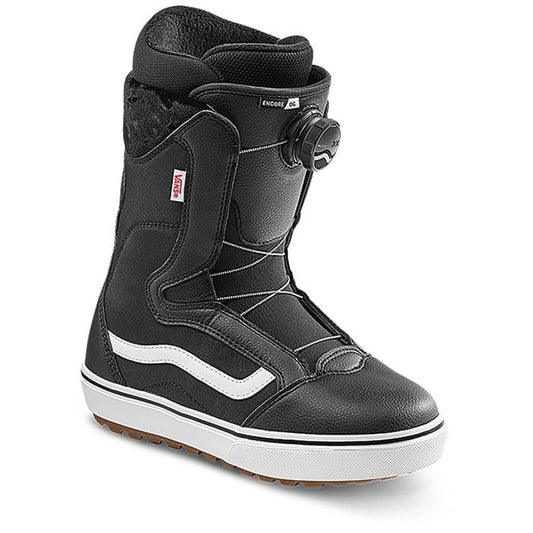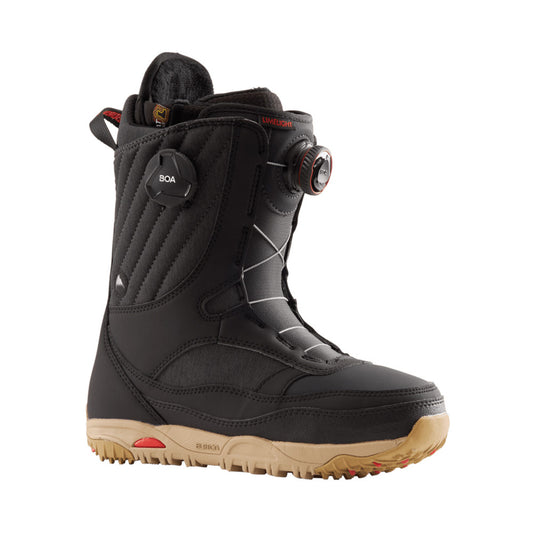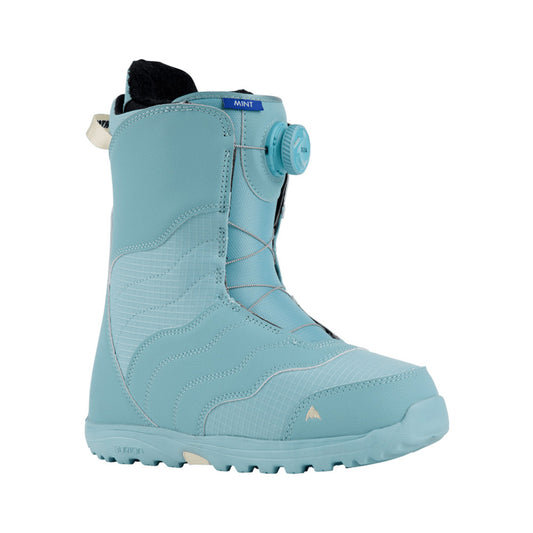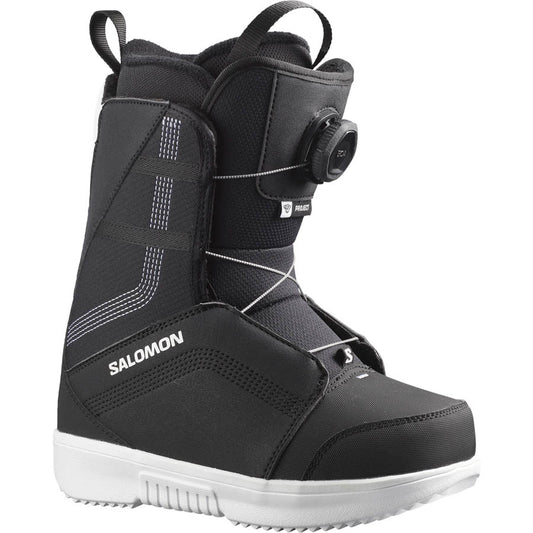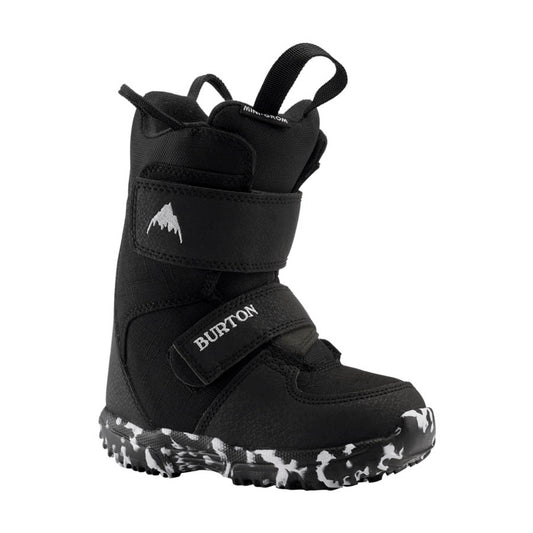Finding the right snowboard boot is critical to your enjoyment on the mountain. Staying warm, dry and comfortable can help make your experience an enjoyable one, and rather than worrying about being cold, you can focus on your riding. Also, an insufficient boot can actually hinder your performance and keep you from progressing. It is important to find a boot that is an appropriate match to your board, bindings and your skill level. Fortunately, using our filters on UtahSkis.com can help you do just that.

| Mens | Womens | Kids |
| Men’s boots can be found in sizes 6-15. While brands vary in fit, a few make models that are specifically for wider feet. If we have any wide models in stock, a “Wide” filter will appear on the site. | Women’s boots are built a bit differently than men’s. First, women’s calves are lower on their legs then men’s, so the cuffs of their boots don’t come up as high. This makes the boots less restrictive and more comfortable. They are also generally softer in flex, so women can transfer energy easier. Women also have narrower feet, so the boots are usually narrower to accommodate this. | You may notice a bit of an overlap in sizes 6 and 7 between kids and adult boots. Kids boots will generally have a lower cuff and will be a bit narrower than an adult boot. It’s also important to note that the flex of a kid’s boot will likely be softer. If the rider is under 110 lbs. a kid’s boot is likely the more appropriate choice. |
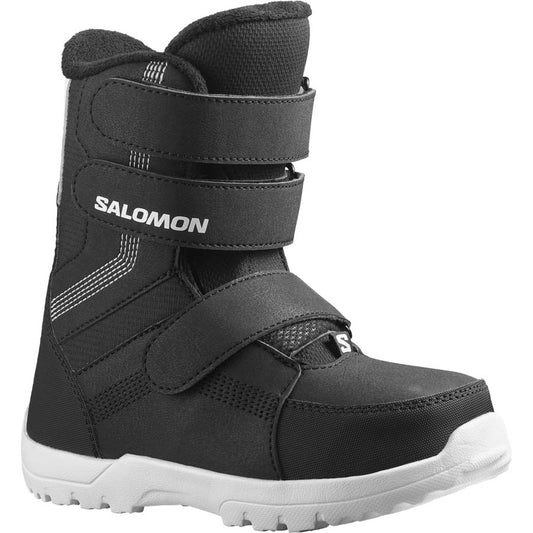
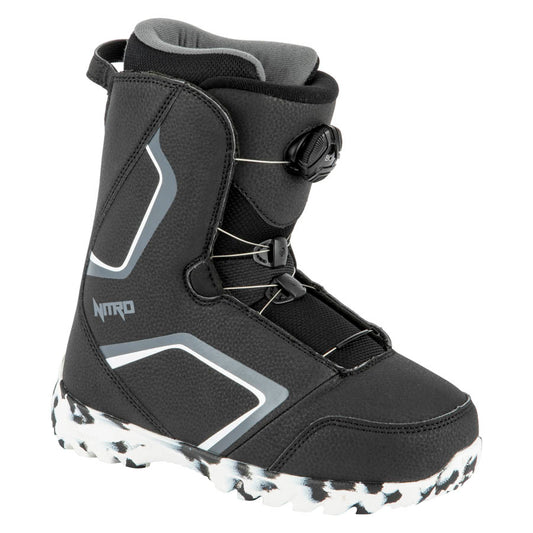
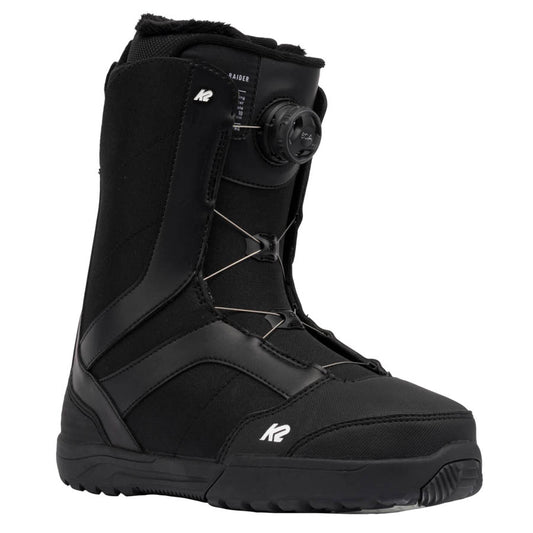
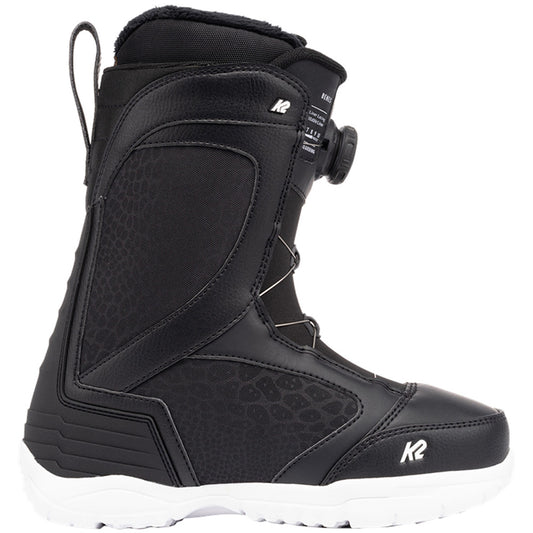

While most boots are “true to shoe size”, it’s important to note that they aren’t shoes and therefore shouldn’t fit like them! When you buy a shoe, you generally wear them roomier and a little larger than necessary. A snowboard boot is made for performance, and therefore if it’s too big, your foot will move around instead of directly transferring energy to the boot and then to the binding. That being said, you should try to get the smallest size you can get away with without the boot being uncomfortable. If you are in between sizes, the smaller of the two is likely the better option.
Wearing the right sock is important too. Getting a “thick sock” to take up room just wastes energy transfer and also will end up making you colder due to the added space in the boot. A thinner snowboard specific sock will wick away sweat and will keep you warmer while allowing the boot to perform as needed.
Sit down, completely loosen the boot and then slide your foot into it. Kick your heel back into the boot a few times, and then tighten the liner and then the outside of the boot. When you stand up, your toes should be touching the end of the liner. You should be able to feel that it’s there but your toes shouldn’t be curled, they should just be touching it. When you stand in a bent stance your toes should come slightly off the end of the boot. This allows for just the right amount of room in the boot when it breaks in without there being too much room.

Everyone is familiar with the traditional lace up style of boots. Just like a shoe, you simply pull up to tighten the laces, tie them in a bow and you’re good to go. The simplicity is unmatched, and it’s the most basic form of tightening system you will find on a snowboard boot.

If you’ve seen the boots with a cable and a dial at the top of the outer tongue then you know exactly what we’re talking about. If not, boots with a boa lacing system have a cable or rope instead of laces, and a dial that when turned tightens the cable or rope. This makes it even easier to tighten your boots, and the cable stays tightened until you pop the dial back open at the end of the day. Found on various levels of mens, womens, and kids boots, this system is especially nice for those who never feel they can get their boots as tight as they want them. Or, after riding for a while, when the boot and the liner generally loosen up a little, riders can simply reach down and turn the dial a few times without having to sit down and completely re-lace their boot on the hill! The BOA Focus system also gives riders zonal tightening options, so you can keep certain sections tighter or looser than others for ultimate customization. Some models also use one dial for the outside of the boot and one to tighten the liner. And to answer the big questions “Will it break?”. BOA is actually its own company, and its system is used on everything from shoes and hockey skates to horse boots. Therefore, it’s a proven system, made to outlast various levels of performance.

While most brands are utilizing BOA in some fashion, some still have their own form of a quick lacing system. Most systems involve some sort of draw string, sometimes fixed to the tongue or the side of the boot. After the user pulls up on the system to tighten the boot, the system usually locks into place so the lace cannot become loose while riding. These systems allow the user to get much more leverage that with a traditional lace, which is nice for women and kids who may not be able to tighten their boots as tight as they like. They also generally allow for zonal tightening which is found in the higher end versions of BOA.
This generally represents entry level boots perfect for the beginner to learn on. Beginners aren’t quite sure of their movements at this point and therefore don’t want the boot to send every little movement they make to the board.
This includes boots both ideal for the beginner looking to progress as well as the park rider looking for something to learn tricks such as small jumps and boxes on. The key here is these boots are forgiving and make learning anything a breeze.
Riders looking for a little more performance without something too demanding will find a medium flexing boot ideal. This could be the solid intermediate looking to progress or the advanced rider that simply doesn’t want the drive and response of a stiff boot.
Most aggressive riders will find a boot in this category fits their needs. A stiff flex means better edgehold, and effortless energy transfer. If a beginner gets into a boot in this category they may find themselves catching their edges and may find it harder to control their board.
Boots in this category are ideal for the hard charger. This is the rider looking to carve hard turns at high speed and wants the ultimate performance out of their boot. These are generally found at the top of the line and are the most responsive options out there.

Boots with original retail in this range usually represent a mid-level boot with a mid-level flex. While the boot isn’t too stiff or demanding, it offers a little more response and performance for the intermediate rider. Generally, the liners in these boots are made with materials that wick away sweat and keep the rider warm. The fit of the boot is also a little more exact, and they are usually less bulky, which lowers weight and maximizes energy transfer. Liners are usually heat moldable.
Usually higher performance boots, these have all the bells and whistles. Often stiffer and more responsive, boots in this range give riders the ultimate in customization, while keeping boots low in weight and as comfortable as possible. Liners are generally heat moldable as well.

